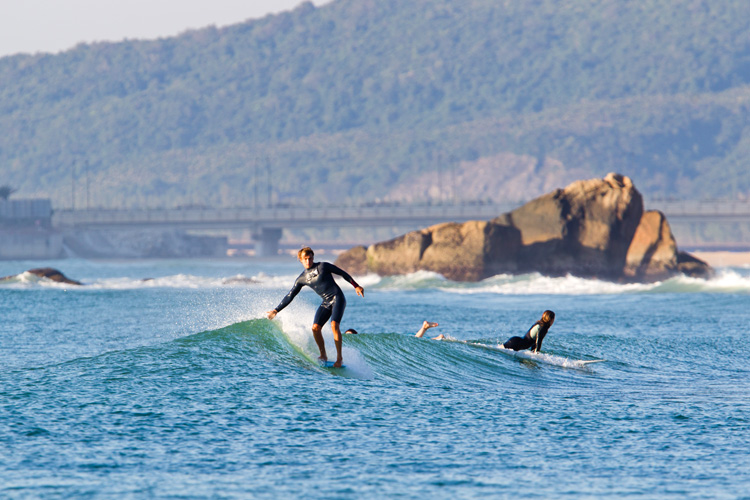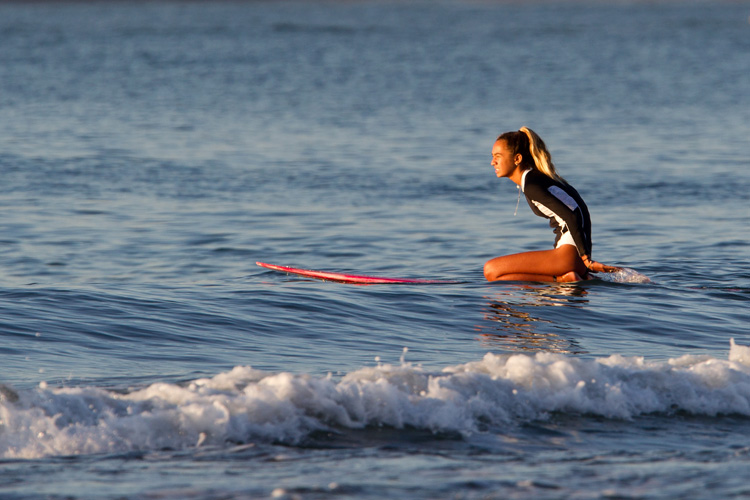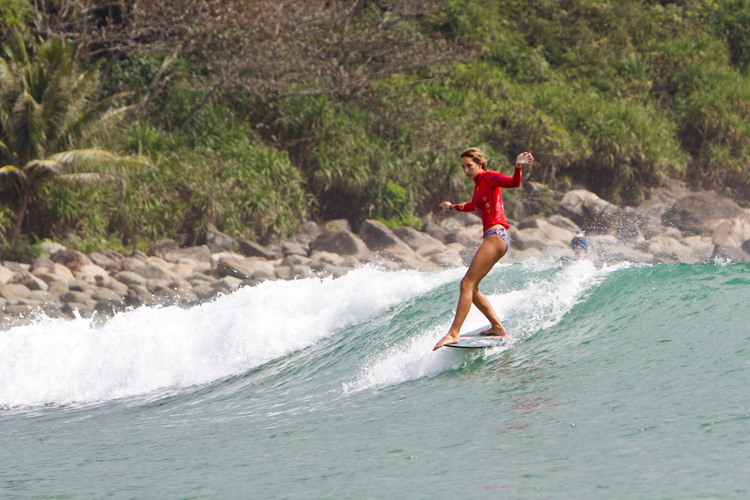For many wave riders, surfing on a leashless board is a question of style, authenticity, and attitude. Paddling out on a cordless surfboard can also be a different way of experiencing the glide.
However, the "kook's cord" was invented with a purpose.
More than just a matter of style or safety, it was a way of avoiding swimming back to shore to retrieve the missile.
Avoid going out leashless if you're a beginner surfer or even if you're still adapting to a new board. You will put the health of others at risk.
There could be surfers, swimmers, children, and older people in the water who don't realize a lost surfboard is uncontrollably heading toward them.
We lose our board more often than we think.
Whenever we fail the take-off, slip on a bottom turn, get hit by a falling lip, get hammered by a closeout, ditch the board, fail to kick out safely, or wipe out, we tend to lose control of it.
Unlike some top longboarders think, the leash was not invented for the less-skilled surfer.
It is a smart piece of gear that protects everyone - the first-timer, the weekend warrior, and the pro surfer.
The good news is that it is rare to see shortboard surfers showing off their skills without their favorite leg rope.

Longboarders like to do it a lot, even though they're riding heavier and potentially more dangerous equipment.
But they have a valid reason to do so in controlled environments - the leg rope disturbs their footwork.
So, if you really want to enjoy a cordless surfing session, at least follow a few common-sense guidelines.
One of the most important recommendations is to do it in knee-high wave conditions and at uncrowded spots where the only obstacles are sandy beaches.
But there are more leashless surfing recommendations.
Gain Confidence
Make sure you know the board well and anticipate any unfavorable moments.
Make sure to grab the rail before wiping out or falling off the board while performing maneuvers.
Wax It Up
The more wax you put on a cordless surfboard, the fewer times you'll slip out and lose your equipment.
Do the Turtle Roll
Paddle straight at the wave, flip the board, get underneath the board, and pull the board down so that the wave passes over the bottom of the board.
The turtle roll is often extremely effective.

Go Over the Broken Wave
As the whitewater prepares to hit you, get in a seated position, pull the nose of your board up, tuck your feet under you, put them on the back of the board, and climb over the wave.
Punch Through the Wave
Paddle directly at the whitewater, and before it hits you, put your hands in the pop-up position, peel your chest up, and create space between your chest and the board.
Angle the Nose and Duck Dive
As the whitewater approaches, drop your left or right shoulder and angle the left or right rail and nose of the board underneath the water at approximately 45 degrees.
It's like slicing the wave from rail to rail.
If it's crowded, wear a leash. If it's big, wear a cord. It's the only way of staying connected with your board.
Longboards are not skateboards, and you're not cool just because you don't wear a leg rope. Pros wear leashes all the time.
No leash attached? It's up to you to decide.
If you're going leashless, you're taking full responsibility for the consequences that it may bring.
It's a common mistake to see the surfer's cord as an annoying object that is always getting in the way and consider leashless surfing a quintessential trend.
You're not a purist just because you don't use a surfboard cord. Forget drag issues and old-school obsessions - remember that the ocean is always teaching us new lessons, and some of them end up in tragedy.
